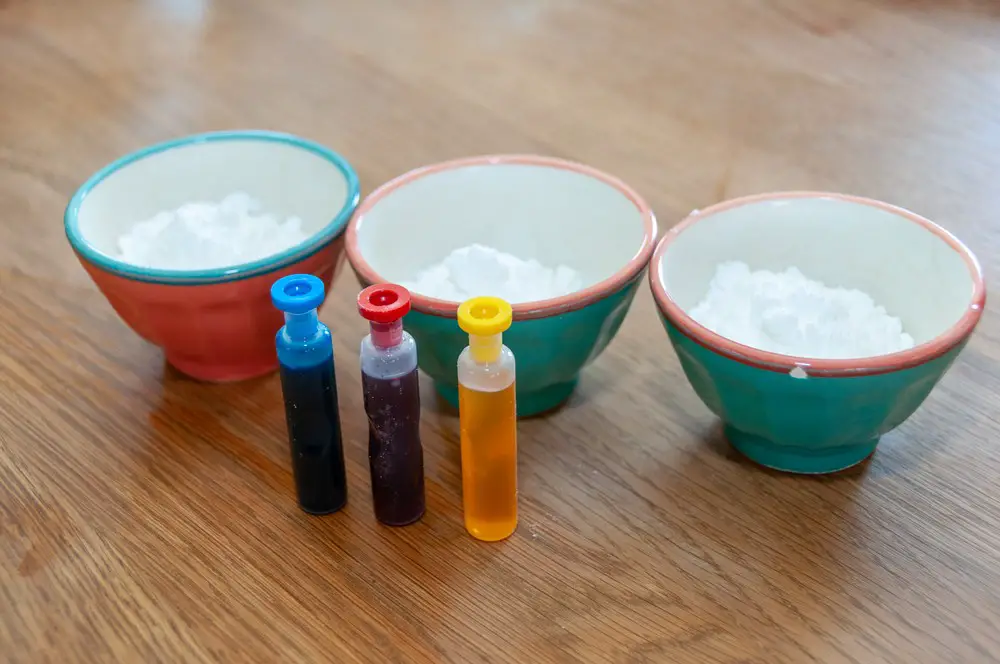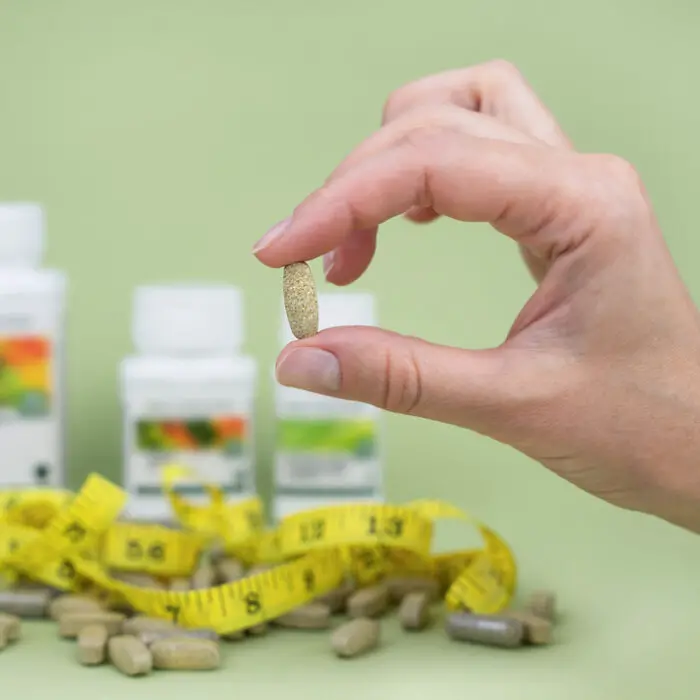Are you a vegan looking for answers about Red 40? You’re not alone! Red 40, officially known as Allura Red AC, is a synthetic azo dye found in many products from candy to soft drinks and baked goods. But does it align with your ethical principles and dietary restrictions? Let’s uncover the truth.
Red 40 is derived from petroleum and adds a vibrant red hue to products. Vegans should be especially mindful of the origin and composition of Red 40, its potential health implications and any controversies surrounding its production. So, the question remains: Is Red 40 vegan? Let’s find out!
Key Takeaways
- Red 40 is a synthetic dye derived from petroleum, raising concerns for vegans about its eligibility in their diet
- This food coloring is found in many products and sparks debate due to its production process and potential health concerns
- As a vegan, learning to identify and avoid Red 40 can be crucial to adhering to personal ethical principles
Is Red 40 Vegan?
Ah, the ongoing debate about Red 40! Well, let’s delve into it, shall we? Red 40, or Allura Red, is a synthetic food dye often used to add a vibrant red hue to various food items. This colorant is certainly present in candy, beverages, and even cosmetics.
So, is Red 40 vegan? In short, yes, Red 40 is considered vegan. Unlike carmine (a red dye derived from crushed insects), Red 40 is created through a chemical process that doesn’t directly involve animal-derived ingredients. The primary source of Red 40 is petroleum, which might not be the most appetizing, but certainly falls within the vegan category.
However, it’s important to note that not all vegans view Red 40 similarly. While the ingredient is technically vegan, the testing and manufacturing processes may raise some ethical concerns. You see, Red 40, like other synthetic food dyes, has undergone tests on animals to determine its safety for human consumption. This association with animal testing can be a deal breaker for some vegans.
Moreover, various regulations dictate how these dyes should be produced, which sometimes entails using animal-derived ingredients such as gelatin as a stabilizing agent. This doesn’t mean that every batch of Red 40 on the market has been manufactured using animal-derived products, but it does raise some questions for those who follow a strict vegan lifestyle.
In a nutshell, Red 40 can be considered vegan in many instances, but it may not align with everyone’s interpretation of veganism. The real decision lies with the individual, based on their beliefs and ethical priorities. So, while the world of Red 40 might be a bit murky, it’s up to you to determine if it’s the right fit for your vegan journey.
Origin and Composition of Red 40
Petroleum and Coal Tar
Red 40 is a common food coloring agent, but do you know where it comes from? Well, it’s derived from petroleum and coal tar. Yup, that’s right! These fossil fuels aren’t just for powering our cars and heating our homes. The process starts by extracting hydrocarbons from petroleum or coal tar, which are then chemically transformed into aromatic compounds called azo dyes. Viola! We have our synthetic red dye.
However, here’s a little heads-up: the connection between Red 40 and fossil fuels might make some vegans uncomfortable, considering the environmental impacts of fossil fuel extraction. Coal tar has a controversial history, as it was once used in medications that were later found to be carcinogenic.
Synthetic Dye
Now, let’s dive into the composition of Red 40 as a synthetic dye. As an azo dye, it comprises a diazonium salt and a coupling component. Fancy chemistry stuff, huh? When these two components are combined, they form an azo group (-N=N-) that links the molecules, creating an eye-catching, vibrant red color.
Red 40 is one of the most widely used artificial colorants in food products, cosmetics, and medications. Manufacturers often choose it because it’s relatively inexpensive, stable, and has excellent coloring properties. Plus, it’s approved for use by the FDA and other regulatory agencies worldwide. But is it vegan? Stay tuned.
Just keep in mind that, as a synthetic dye, Red 40 doesn’t come from any plant or animal sources. Even though it has petroleum and coal tar origins, the final product does not contain animal-derived ingredients. So technically, it can be considered vegan. However, individual perspectives and ethics can vary, so it’s always wise to seek more information and make an informed decision based on your values.
Uses of Red 40
Food Coloring
Red 40, a popular synthetic food dye, adds a vibrant hue to various edible items! You’ll often find it in cereal, candy, ice cream, sports drinks, sodas, baked goods, yogurts, and even pudding. Its widespread use contributes to its status as one of the most common food colorings. But it’s not only the bright shades it lends to foods that make it a go-to choice; Red 40 is also praised for its stability and ability to resist fading.
Let’s take a peek at some typical uses of Red 40 in food products:
- Cereals: Certain well-known brands use Red 40 to make their breakfast options more visually appealing.
- Candy: It’s hard to ignore those luscious red gummy bears or roses, right? Well, thank Red 40 for that!
- Ice cream: Swirls of vibrant red in some fruity flavors wouldn’t be possible without this versatile dye.
Cosmetics
Food isn’t the only realm where Red 40 shines; it also plays a significant role in the world of cosmetics. Many makeup and personal care products contain Red 40 to achieve the perfect tint or shade. This versatile dye brings a splash of color to a wide range of products, from lipsticks and blushes to soaps and shampoos.
It’s not unusual to find Red 40 in:
- Lipsticks: Various shades of red lipsticks rely on Red 40 for their unmistakable allure.
- Blushes: This dye goes beyond just lips and brings warmth to cheeks as well!
- Soaps and shampoos: Red 40 adds a touch of vibrancy to everyday hygiene products.
While Red 40 is undeniably useful in various industries, its vegan status is controversial. However, one thing is certain: it can liven up a product, whether it’s a tantalizing treat or a cosmetic essential.

Red 40 and Health Concerns
When it comes to health concerns associated with Red 40, there are a few areas of interest that stand out. This section explores some of these concerns, including hyperactivity and ADHD, allergic reactions, and potential carcinogens.
Hyperactivity and ADHD
One of the most frequently discussed health concerns for Red 40 is its potential link to hyperactivity and ADHD, particularly in children. While the evidence isn’t conclusive, several studies have suggested a possible connection between artificial food coloring and increased hyperactivity in children. Some experts believe these additives, including Red 40, may worsen the symptoms of ADHD, affecting attention spans and behavior.
Allergic Reactions
Another concern with Red 40 is the possibility of allergic reactions. Although these reactions are rare, they can be severe for some individuals. Symptoms may range from mild skin irritation and rashes to more severe reactions like respiratory distress and anaphylaxis. As a result, if someone exhibits signs of an allergic reaction to Red 40, it’s crucial to seek medical attention promptly.
Potential Carcinogens
Red 40 has also been scrutinized for its potential as a carcinogen. While some studies with rats and mice have indicated a possible link between Red 40 and the development of tumors, other studies have not supported these claims. It’s worth noting that the amounts of Red 40 used in these studies are far greater than what humans typically consume.
In conclusion, while some health concerns are related to Red 40, the overall risk remains unclear. With varying outcomes in scientific studies and differences in individual tolerance, Red 40’s impact on health is still a topic of ongoing research and debate.
Controversies Surrounding Red 40
Animal Testing
It’s disheartening to know that Red 40, an artificial food dye commonly found in many beverages and food items, has been tested on animals. Cruelty-free advocates argue that animal testing isn’t always necessary, especially in cases like this. Furthermore, some might wonder if using Red 40 in products aligns with strict halal standards.
Banned in European Union
Interestingly, the European Union (EU) has banned Red 40 due to health concerns. This fact raises eyebrows, particularly since the FDA considers it safe to consume within an acceptable daily intake. Nonetheless, EU manufacturers opt for natural coloring alternatives instead of Red 40.
Safety and Regulations
The safety aspect of Red 40 has been hotly debated. The FDA regulates its use and limits the amount of Red 40 in food and beverages. While benzidine and p-cresidine, two worrisome substances associated with Red 40, are regulated by the FDA, skepticism remains. People question whether these safety measures can put their minds at ease. It’s humbling to realize that not all coloring agents are created equal, and this one is certainly no exception.

Red 40 and Veganism
Red 40 is a water-soluble dye that adds a vibrant red hue to various food and beverage products. Despite its widespread usage, many people following a vegan lifestyle question its compatibility with their dietary choices.
Carmine as an Alternative
Now, let’s talk about Carmine. Just when you thought you found a vegan-friendly alternative, here’s the catch: carmine is derived from insects! Yes, you read that right. These tiny creatures are crushed to produce this red pigment. So, carmine is a definite no-go zone for vegans.
Vegan-Friendly Alternatives
With Red 40 and Carmine off the table, fear not! Vegans can still enjoy vibrant reds in their dishes thanks to some plant-based alternatives. One such option is beet juice, which provides a natural, deep red color and is 100% vegan. Not only does it give that enticing hue to their foods, but it also packs a mean nutritional punch. So, it’s a win-win for vegans!
Another alternative is Red 4, an aluminum lake variant of carmine. But wait, before you jump for joy, take heed. While it’s water-soluble like Red 40, it’s still derived from insects. Alas, Red 4 remains off-limits for vegans.
In conclusion, Red 40 is a controversial topic in veganism. While it isn’t derived from animals like carmine or Red 4, its production might involve animal testing, leaving vegans in a conundrum. Nonetheless, plant-based alternatives like beet juice offer a bright spot for vegans, giving them options to explore!
Identifying and Avoiding Red 40
Reading Labels
A keen eye is needed When determining if Red 40 is lurking in a product. Always carefully examine ingredient labels; manufacturers must list artificial colors on product labels. Remember, Red 40 could be listed under different names, such as Allura Red, Allura Red AC, and FD&C Red No. 40. Don’t be fooled by these aliases!
Moreover, it’s essential to remember that Red 40 isn’t restricted to just food items. One may also find it in cosmetics, medications, and everyday household items. From lipsticks to cough syrups, Red 40 knows no limits.
Boycotting Products
Boycotting products containing controversial additives like Red 40 is indispensable in seeking a vegan lifestyle. Side effects have been reported, and for vegans, it raises the question of how it’s produced, as it potentially includes non-vegan sources.
For those wishing to avoid Red 40, it’s important to note that many manufacturers have already started replacing artificial colors with more natural alternatives. Look for products with labels boasting “No Artificial Colors” or “Contains Only Natural Colors.” It’s a small victory for the conscious consumer!
In conclusion, steering clear of Red 40 requires diligence in reading and understanding ingredient labels and boycotting products that contain this controversial additive. With scrutiny and determination, it’s possible to maintain a vegan and Red 40-free lifestyle.
Frequently Asked Questions
Does Red 40 contain animal products?
No, Red 40 is synthetic and does not directly contain animal products. However, it is worth noting that some Red 40 production may involve animal testing, which might concern some vegans.
What is the source of Red 40?
Red 40, or Allura Red AC, is a petroleum-derived synthetic dye. It is commonly used to give various foods, beverages, and cosmetics a vibrant red hue.
Are there vegan alternatives to Red 40?
Indeed, there are vegan alternatives to Red 40. Some natural sources of red coloring include beet juice, elderberries, black carrots, and anthocyanins. These natural alternatives are derived from plants and do not involve animal testing or exploitation.
Is Red 40 harmful to health?
The health effects of Red 40 have been debated, but most research indicates that it is safe for consumption in regulated amounts. There are isolated cases of allergic reactions and individuals sensitive to the dye; however, the FDA has deemed it safe for general use.
Which food dyes are not vegan?
Some non-vegan food dyes include Carmine (cochineal or E120), made from crushed insects, and shellac (E904), produced from the secretions of lac insects. It’s wise for vegans to check product labels to avoid such ingredients.
Is Red 3 vegan?
Red 3 (Erythrosine) is a synthetic dye like Red 40 and contains no animal-derived ingredients. Nonetheless, vegan individuals should consider the potential for animal testing when consuming products containing Red 3.
Image Courtesy of DepositPhotos







